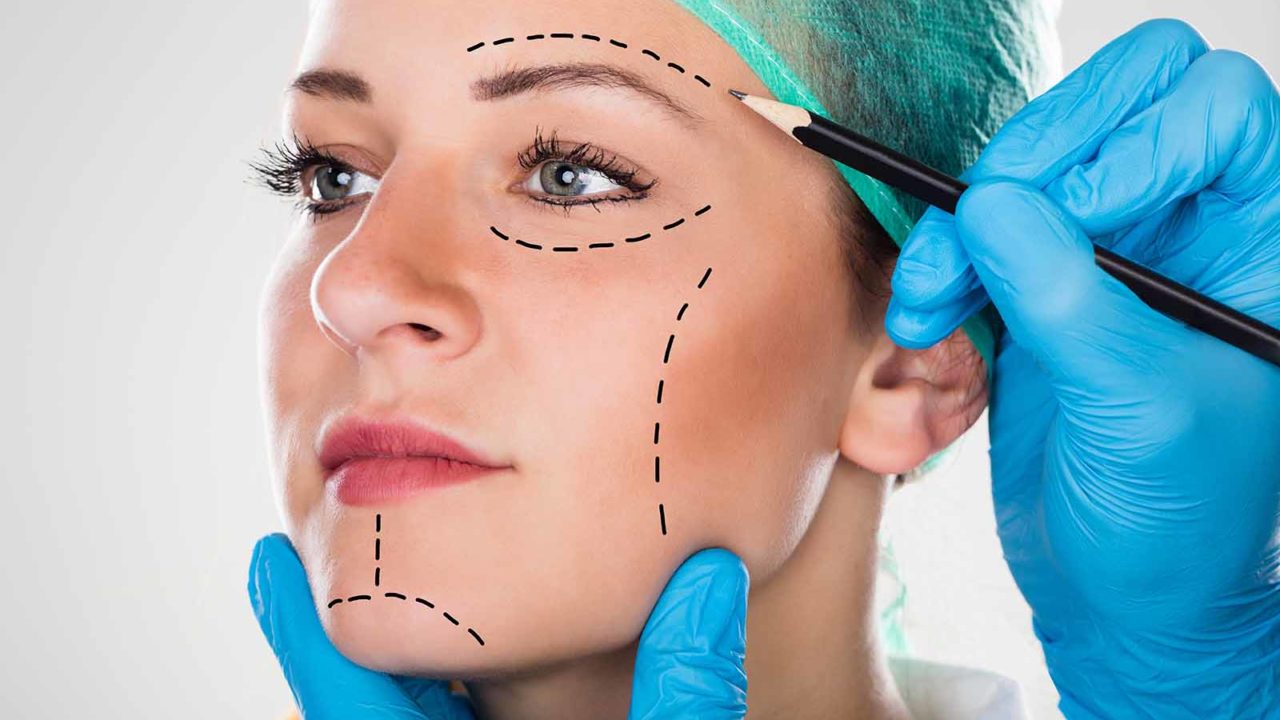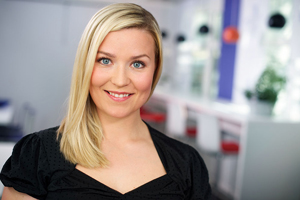
Children and adolescents see adverts for plastic surgery, alcohol, and gambling
Surveys show that many children and young people are exposed to deliberate advertising through social media.
Choose language in the Google-box below. Some translations may be flawed or inaccurate.
Citing a survey by the National Institute for Consumer Research (Forbruksforskningsinstituttet – SIFO) where a thousand Norwegian teenagers between the ages of 15-16 were asked about exposure to advertising, NRK writes that:
- Almost 80 percent of the adolescents have received gambling advertisements
- 48 percent have received advertisements for plastic surgery or cosmetic treatment with Botox
- 25 percent have received advertisements for alcohol
- About 80 percent of those surveyed have said they did not want this type of marketing
Liposuction on Snapchat
On Snapchat, there are several beauty surgeons who live-stream footage of them operating patients. One of them is called Matthew Schulman who has over 4 million followers and shows daily how he operates away fat or enlarges breasts.
«I have no doubt that social media has increased the demand for cosmetic surgeries, especially among young patients,» says Matthew Schulman in a video made by the channel Motherboard.

Snapchat videos from this New York surgeon thus have a big advertising effect. Schulman says that almost everyone who makes contacts for an operation is already a follower on Snapchat. Videos and posts of this surgeon are an example of what children may come across from features and commercials in the right-hand column on Snapchat.
Some parents may not be aware that Snapchat contains thousands of channels that have ads and editorial features. And very few of the parents have a critical view on how this may negatively influence children.
Much of the marketing is done via social media
The Norwegian Consumer Council (Forbrukerrådet) has released a report showing how social media is actively used to promote unhealthy food and drink. Among other things, it is concluded that marketing takes place through role models with great influence. It can be influencers, bloggers, and YouTubers who are popular also among children and adolescents.
The report points out that young people are in a vulnerable phase where they are particularly exposed to advertising. And the report says:
«There is reason to assume that digital marketing, which uses sophisticated methods and is tailored to the individual user, has at least as great, if not greater, effect on children and young people as traditional marketing.» (Young and prone to unhealthy advertising: 2019)
Advertising affects everyone
Tonje Hovde Skjelbostad, Director General of the Norwegian Consumer Authority (Forbrukertilsynet), is clear that advertising with a deliberate message can be problematic for children and young people.

Tonje Hovde Skjelbostad, Deputy Director-General of the Norwegian Consumer Authority. Photo: CF-Wesenberg
“Advertising affects everyone, and the purpose of the advertising is to sell the message from the advertiser behind it. When it comes to children, they are also influenced and especially through marketing with products that appeal to children. It may be advertisements where children participate, such as visual ads on TV, and radio where there are children or have a voice in the advertisement. We have also considered advertisements that have a message that children must look a certain way or have a given product to fit in or be cool to have a stronger influence on children,” says Skjelbostad.
Plastic surgery and gambling are particularly unsuitable to market to children, Skjelbostad points out.
“Cosmetic surgery aims for a lasting change in one’s own appearance, which we believe creates unfortunate beauty pressures. Advertising for cosmetic surgery aimed at children will be illegal under the Children’s Rules of the Marketing Act. Similar assessments would be made in connection with gambling, but here it is primarily the Lottery Authority that oversees it,” says Skjelbostad.
“Advertising products such as unhealthy food and beverages is unlikely to in itself be in violation of the Marketing Act,” says Skjelbostad. “However, if they have direct purchase solicitations, such as messages with ‘run and buy’ in connection with such products, it will be illegal because of the direct purchase solicitations.”
How strict is the law?
“Due to their age and lack of experience and critical sense, children have a harder time understanding what marketing is and what the purpose of marketing is,» says Skjelbostad.
“In addition, it is more difficult for children to be able to recognize when something is really advertisement and not something else, for example, in cases where an influencer talks warmly about a brand-new makeup product, but in reality is sponsored to talk about it. Admittedly, the rules have been tightened here so that influencers must mark such elements, but the children may not catch it.”
“Regarding this, children are given special protection against marketing in Chapter 4 of the Marketing Act,” explains Skjelbostad.
– When children and young people might be exposed to advertising, the Marketing Act shall be interpreted more strictly. Among other things, it takes less before an advertisement will be considered contrary to good marketing practice if children are targeted or exposed. There is also an explicit ban on direct purchase solicitations aimed at children, encouraging children to buy products or services, or encouraging them to nag their parents about buying things, says Skjelbostad.
According to Skjelbostad, proper and clear labeling of advertising on social media is therefore particularly important for children.
– Children and adolescents are active social media users and have a harder time understanding what advertising is and distinguishing it from other personal content. This means that those who have followers under the age of 18 must be extra careful to mark the advertisement clearly and with a language that children understand, says Skjelbostad.
Is social media advertising particularly challenging?
Children and young people themselves are acting as consumers at an ever younger age and in an increasing number of channels, and children are an attractive target group for businesses, says Skjelbostad. Social media gives advertisers new and more opportunities to reach consumers.
– The advertiser gets a greater opportunity to aim the marketing directly towards their target group, which in turn gives more opportunity to reach children directly. Much of the marketing also happens in channels where parents do not have the same overview as before, such as on social media. This marketing is often adapted to the child’s age, and parents, therefore, do not necessarily see the same advertising even though they are members of the same social network, says Skjelbostad.
The Norwegian Consumer Authority also sees that the distinction between advertising and other content is gradually being erased.
– Marketing can be more and more easily integrated into other fabrics, and will often appear as something other than marketing, typically by mixing with gaming, toys, and entertainment activities. By getting the child to participate in a competition or game, the trader manages to create interaction and participation. Mixing marketing with games and competition makes it harder for children to understand that there is marketing involved. By, for example, using young girls to promote products or services on Instagram or blogs, the advertisement appears as the young influencer’s personal statements rather than advertising, says Skjelbostad.
This makes the boundary between advertising, information and entertainment blurred and makes the effect of marketing stronger and harder both to identify and to guard against. Therefore, the Norwegian Consumer Authority is concerned that advertising on social media should clearly appear as advertising. And is clearly marked with “advertising” or “ad” so that this is where you first look when reading one post, says Skjelbostad.
How to make your children aware?
Children and young people should be aware of the persons they follow on social media,» says Skjelbostad. Parents can talk about the fact that one should be aware that many of the profiles they follow on social media have this as a job.
– Products and services they mention are often paid for, or the other benefits such as free products and services. The job of many influencers is precisely to promote goods and services on behalf of advertisers with which they collaborate with.
Often there is very professionalized machinery behind it, which is then presented in a more “harmless” packaging, such as the young influencer’s personal experiences and recommendations.
– They may well be responsible for the positive recommendations on products or services, but when the distinction between entertainment/diary and advertising becomes blurred, it is difficult for everyone, but perhaps especially for children, to see through what pure marketing is, says Skjelbostad.
A small review with the children about who they follow on social media, to see what types of posts are being promoted, can also be a nice beginning.
Norwegian children receive profile-based advertising
The boys receive one type of advertisement and the girls another, according to the survey conducted by SIFO researchers Thea Grav Rosenberg, Kamilla Knutsen Steinnes, and Ardis Storm-Mathisen:
Read more English articles here.
(Written on 2nd May 2019 and translated by Ratan Samadder)










